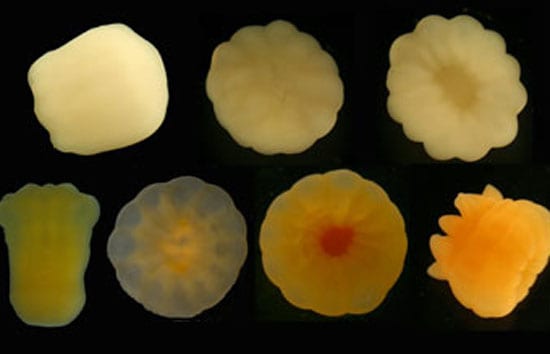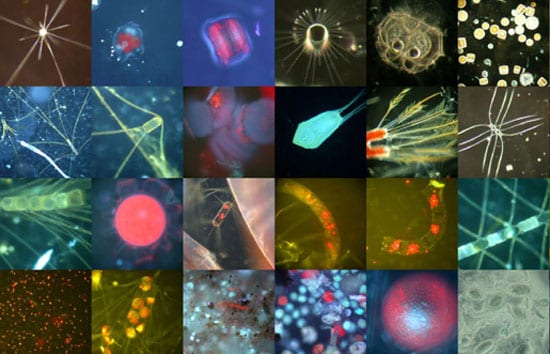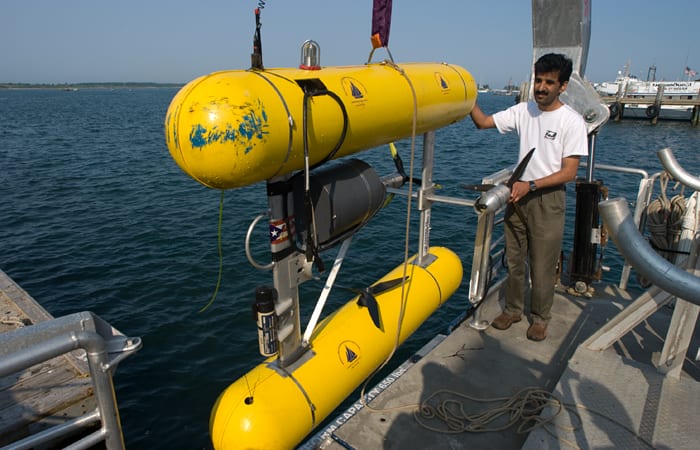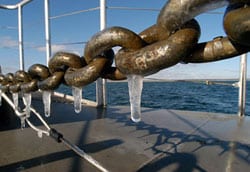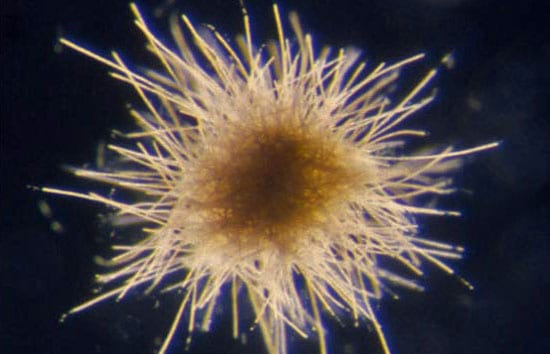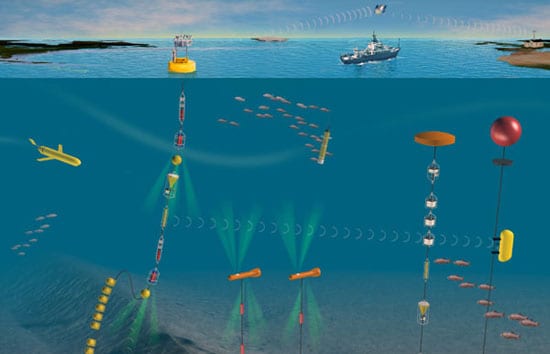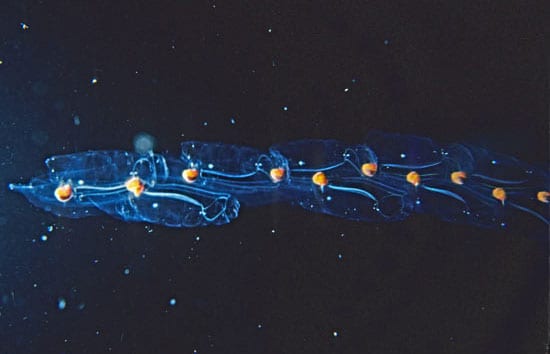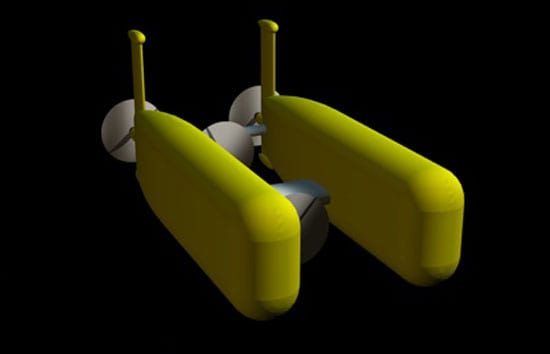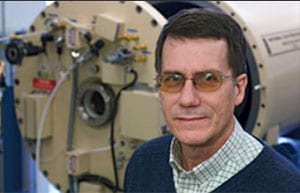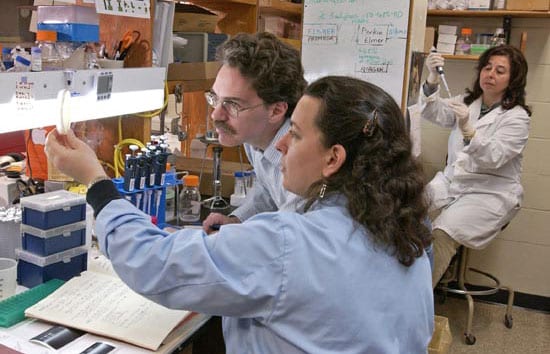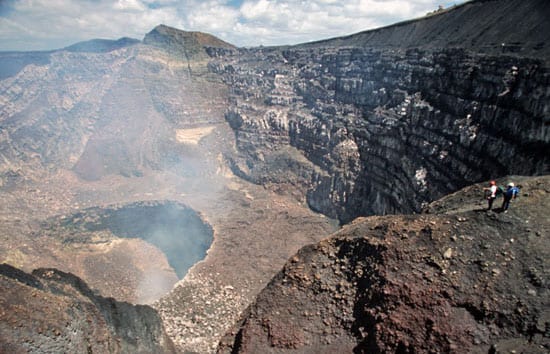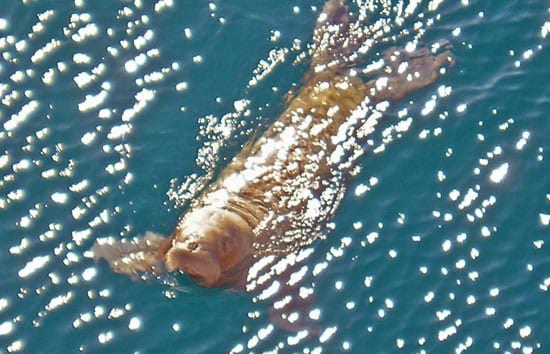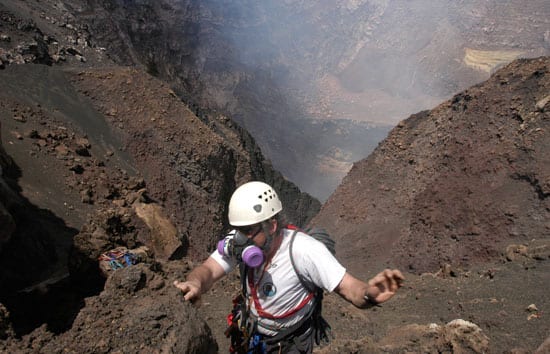Feature
Lullaby for Larvae
Like many babies, these tiny offspring arrived this spring amid much fanfare and a little trepidation. Never before had scientists witnessed the birth of deep-sea Antarctic corals, which unlike like…
Read MoreA Journey to the Ocean’s Twilight Zone
You are about to enter another dimension. You’re moving into a place of both shadow and substance, of things and ideas; a journey into a wondrous part of the ocean,…
Read MoreSwimming in the Rain
Twilight zones, witch hunts, and crossbows usually don’t find their way into tales about new oceanographic instruments. This story isn’t typical, but it does start in the usual way, with…
Read MoreGone Fish Assessing
Scientists at WHOI are applying new technologies to help the National Marine Fisheries Services assess fish stocks and maintain critical habitats
Read MoreJason Versus the Volcano
Through the camera eyes of the undersea vehicle Jason, scientists were investigating a quietly bubbling pit on the side of a large volcano on the seafloor south of Japan in…
Read MoreChilly Scenes of Winter off Cape Cod
When winter winds began rattling the storm windows last autumn, Andrey Shcherbina and Glen Gawarkiewicz shook the mothballs out of their cold-weather exposure suits and dusted off their sea boots.…
Read MoreOcean Microscope Reveals Surprising Abundance of Life
Towing an underwater video microscope across the Atlantic Ocean, two scientists found unexpected abundances of colonial cyanobacteria that fertilize the oceans with nitrogen. The bacteria may turn out to be…
Read MoreScientists Gear Up to Launch Ocean Observing Networks
Oceanography is on the verge of a revolution. Scientists and engineers have been dreaming up networks of permanent observing outposts that could probe from the sea surface to the seafloor from many different locations in the Atlantic, Pacific, and Arctic Oceans. And that dream may take a big step toward reality if Congress agrees to the National Science Foundation’s six-year Ocean Observatories Initiative.
Read MoreVoyage Takes a Census of Life in the Sea
Scientists collected more than 1,000 shrimplike creatures, swimming snails and worms, and gelatinous animals, including many species never seen before, on a landmark cruise to take inventory of the ocean’s…
Read MoreA Modest Proposal to Sustain Lobsters and Lobstermen
A new study by a WHOI scientist and a former lobsterman suggests a provocative lobster management strategy that offers economic benefits to the lobster fishermen, while invigorating lobster stocks.
Read MoreTransparent Animal May Play Overlooked Role in the Ocean
Salps don’t get much respect. They’ve been around for millions of years, but hardly anyone even knows they exist. Even many who have heard about these transparent, jelly-like creatures consider…
Read MoreNew Hybrid Deep-sea Vehicle Is Christened Nereus
Nereus—a mythical god with a fish tail and a man’s torso—was chosen Sunday (June 25) in a nationwide contest as the name of a first-of-its-kind, deep-sea vehicle under construction at…
Read MorePeople Around WHOI
New WHOI Class Helps Students Communicate with Public
There’s a lot of giggling outside room 304 at Mullen-Hall Elementary School in Falmouth. Mass., as 24 fourth-graders wait for their classroom to be transformed into the deep ocean. They…
Read MoreWHOI President and Director Robert Gagosian Steps Down
Robert B. Gagosian announced June 5 that he plans to step down as president and director of Woods Hole Oceanographic Institution, a position he has held for 12 years. Effective…
Read MoreA Laser Light in the Ocean Depths
Graduate student Anna Michel is adapting laser technology to the murky fluid environment and crushing pressures at depths of 11,000 feet. The goal is to develop an instrument that can directly measure the many elements spewing from hydrothermal vents just as they emerge from Earth?s crust.
Read MoreThe Chicken and the Tern
WHOI scientists find that the dramatic difference comes down to three amino acids on a single protein.
Read MoreInto the ‘Mouth of Hell’
Ken Sims peers over the rim of Masaya Volcano and looks 2,000 feet (600 meters) down into the smoking crater lined with rows of jagged rocks that jut up like…
Read MoreAbandoned Walrus Calves Reported in the Arctic
Researchers on an oceanographic voyage in the Arctic Ocean report, for the first time, baby walruses unaccompanied by mothers in areas far from shore and over deep water, where they likely could not survive. The phenomenon was coincident with movement of warm water into Arctic basins and subsequent melting of the sea ice that walruses normally utilize as resting platforms.
Read MoreBuilding a Computer Model to Forecast Red Tides
The algae Alexandrium fundyense are notorious for producing a toxin that accumulates in shellfish such as clams, mussels, and oysters, leading to paralytic shellfish poisoning in humans. The microscopic plants…
Read MoreTo Catch an Erupting Volcano
Augustine, an island volcano 170 miles southwest of Anchorage, Alaska, began erupting in December 2005. By February, Uri ten Brink of the U.S. Geological Survey (USGS) in Woods Hole had…
Read MoreDo Fishing Regulations Lead to More Accidents?
Fishermen have argued that regulations about when and where they can catch fish have caused more sinkings and fatal accidents at sea. But a new statistical analysis by Woods Hole researchers has found no hard evidence to support that argument.
Read MoreNoxious Gas from the Mouth of Hell…
The hidden world of salps OFF THE ANTARCTIC PENNISULA—Biologists Larry Madin (WHOI) and Patricia Kremer (U. Connecticut) led a month-long cruise in January 2006 aboard the ice-strengthened ship L.M. Gould…
Read MoreA ‘Book’ of Ancient Sumatran Tsunamis
Exactly one year after the devastating 2004 Indian Ocean tsunami, Jian Lin found himself on a Chinese research vessel off Sumatra, floating above the epicenter of the seafloor earthquake that…
Read More
